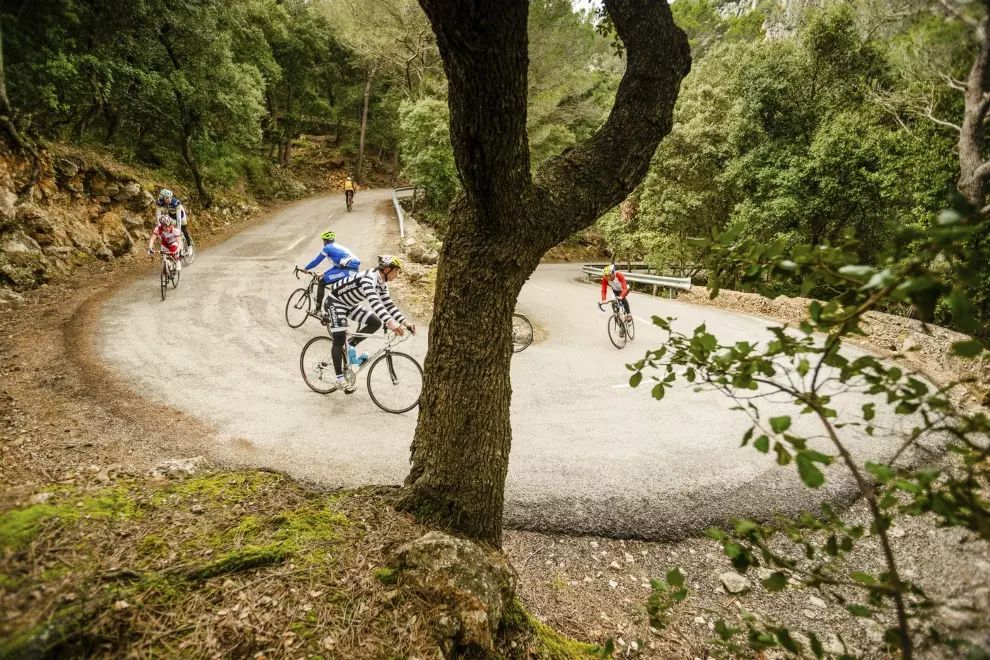“Riding outdoors in winter is crucial because no indoor trainer can truly replace real cycling. Sure, a trainer helps build fitness, but riding in actual conditions engages your entire body, core included, and forces you to adapt to wind, weather, and the unpredictable terrain that cycling is all about,” says Gaspi. He warns that winter terrain can shift hour by hour, making it essential to stay alert. Mornings can bring frozen, rock-hard ground, but as soon as the sun hits, the surface softens, turning into a slippery mess.
North-facing slopes and shaded forest trails may stay frozen all day, while sun-exposed paths melt into muddy traps. The trickiest conditions arise when a frosty night is followed by a sudden daytime thaw—this creates a slushy top layer over a solid base, making it as slick as Nutella on glass. If you’re not confident in your bike-handling skills, stick to stable, well-maintained routes rather than testing unpredictable terrain.
Planning your route is key in winter. Shorter days mean less time for long rides, and the weather can change in minutes. Gaspi recommends riding in the morning when the terrain is firmer and traction is more predictable. In the afternoon, thawing trails can turn into a sloppy, slippery challenge. Road cyclists need to be particularly careful—what appears to be a dry road during the day can refreeze overnight, creating a hazardous layer of black ice. “The worst are those near-zero days when you can’t tell if it’s going to be grippy or dangerously slick. If you’re unsure, play it safe and stick to solid surfaces,” advises Gaspi.

Hydration is another easily overlooked factor in winter. You don’t feel as thirsty as you do in summer, but that doesn’t mean your body needs less fluids. Dehydration happens just as fast, if not faster, in cold weather because your body works extra hard to regulate temperature on top of physical exertion. The solution? Carry a thermos with warm tea or an electrolyte drink, and make it a habit to sip regularly, even if you don’t feel thirsty. A neoprene cover for your water bottle is also a great hack to prevent your drink from freezing.
It might come as a surprise, but many pro bikers train on e-bikes in winter—and for a good reason. “With an e-bike, you can keep a steady tempo without excessive sweating. Sweat is your enemy in winter—once you stop, you chill quickly. An eMTB lets you manage your intensity so you stay warm without overheating while still getting a solid workout,” Gaspi explains. However, one thing to keep in mind is that cold temperatures reduce battery performance, so be sure to factor in a shorter range when planning your ride.
Finally, dressing correctly is the most important part of winter cycling. Forget the mindset of “more layers arealways better”—your goal is to stay dry, not overdressed. The biggest mistake is wearing too much and sweating excessively, which leads to rapid cooling. Layering smartly is key: the first layer should wick away moisture, the second should insulate, and the third should block wind and moisture. Gaspi’s rule of thumb?
Start slightly cold. “If you feel perfectly warm before you start pedalling, you’re overdressed. You should feel a little cold at first—once you get moving, your body will heat up, and you’ll be comfortable,” he advises. And don’t forget the gloves and the beanie—most body heat escapes through your head and hands.
“Ride in winter, but ride smart,” Gaspi concludes. “The biggest trap is a sudden warm spell after a frosty period—that’s when the terrain becomes unpredictable. If you’re not feeling confident, shorten your ride or stick to solid ground.” So, are you ready to hit the trails this winter?




